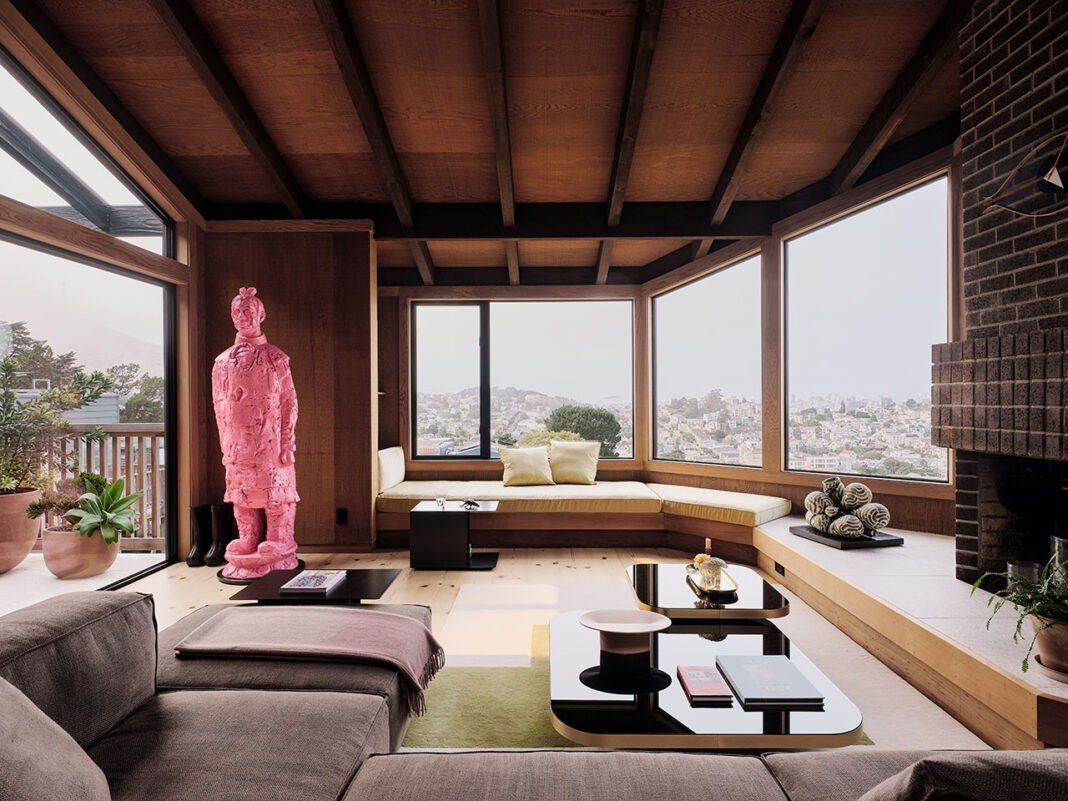In San Francisco’s layered architectural landscape, few projects manage to balance legacy and modernity with the finesse demonstrated in Studio Terpeluk’s transformation of the Redwood House. Originally designed in 1974 by Albert Lanier – an influential modernist and the husband of renowned sculptor Ruth Asawa – the residence was already steeped in design significance. Lanier’s signature style, marked by geometry, immersive use of redwood, and a sensitivity to the natural surroundings, positioned the home as a quiet icon of its time. Today, thanks to an imaginative renovation, the house lives again with renewed significance.
Studio Terpeluk’s approach to the renovation was neither preservationist in the rigid sense nor a radical overhaul that erased all its character. Instead, the studio embraced the challenge of engaging with the home’s architectural DNA, seeking not to replace it, but to extend it into a contemporary context. Their philosophy was simple: intervene only where necessary to reveal the home’s best qualities.
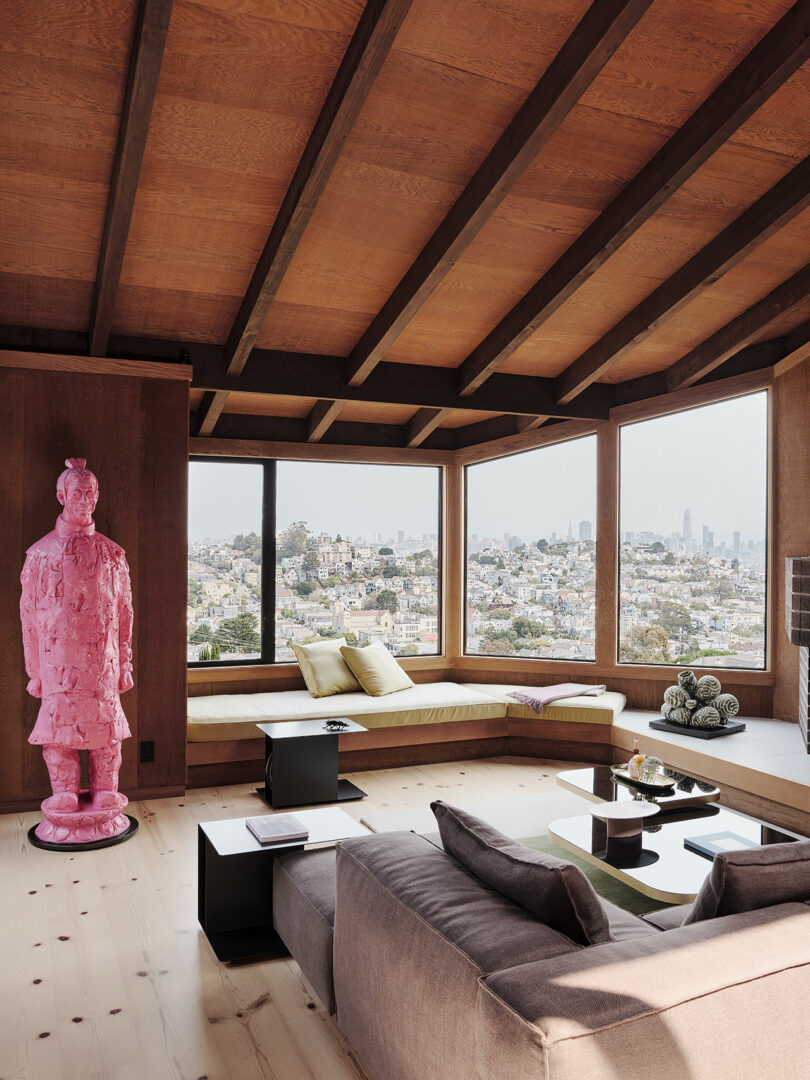
The spatial layout was subtly but significantly revised. Rooms that once felt compartmentalized were opened up, allowing light to travel more freely and enabling visual connections that enhance the sense of space. Views of the city were framed, and interior pathways were realigned to create a smoother flow between zones. The result is a residence that feels both more expansive and more cohesive, without losing its sense of intimacy.
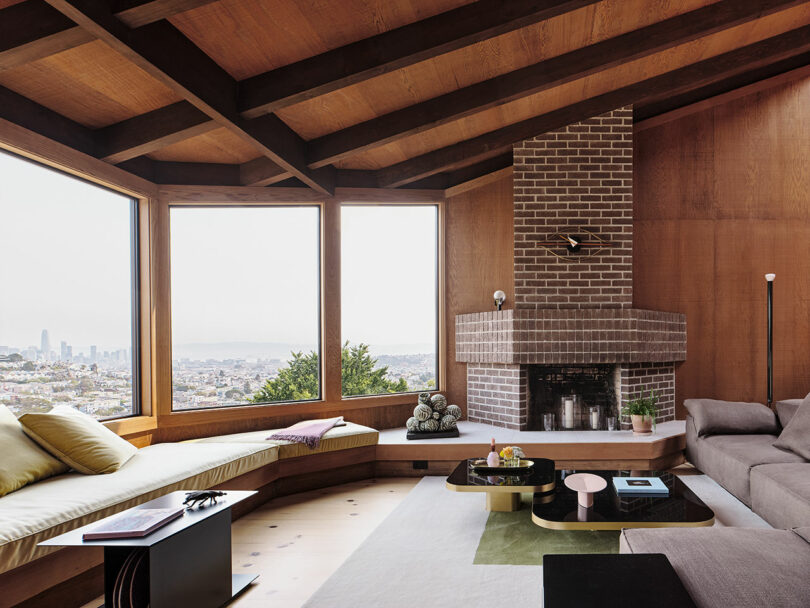
One of the renovation’s highlights is its material palette – a tactile and thoughtful interplay between old and new. At the center is wood. The home’s original warm redwood interiors serve as a foundation for the design. To complement and balance this, Studio Terpeluk introduced reclaimed Douglas fir flooring sourced from former pier pilings – a nod to sustainability. These reclaimed elements introduce a added texture and a lived-in authenticity that complements the original surfaces rather than competing with them.
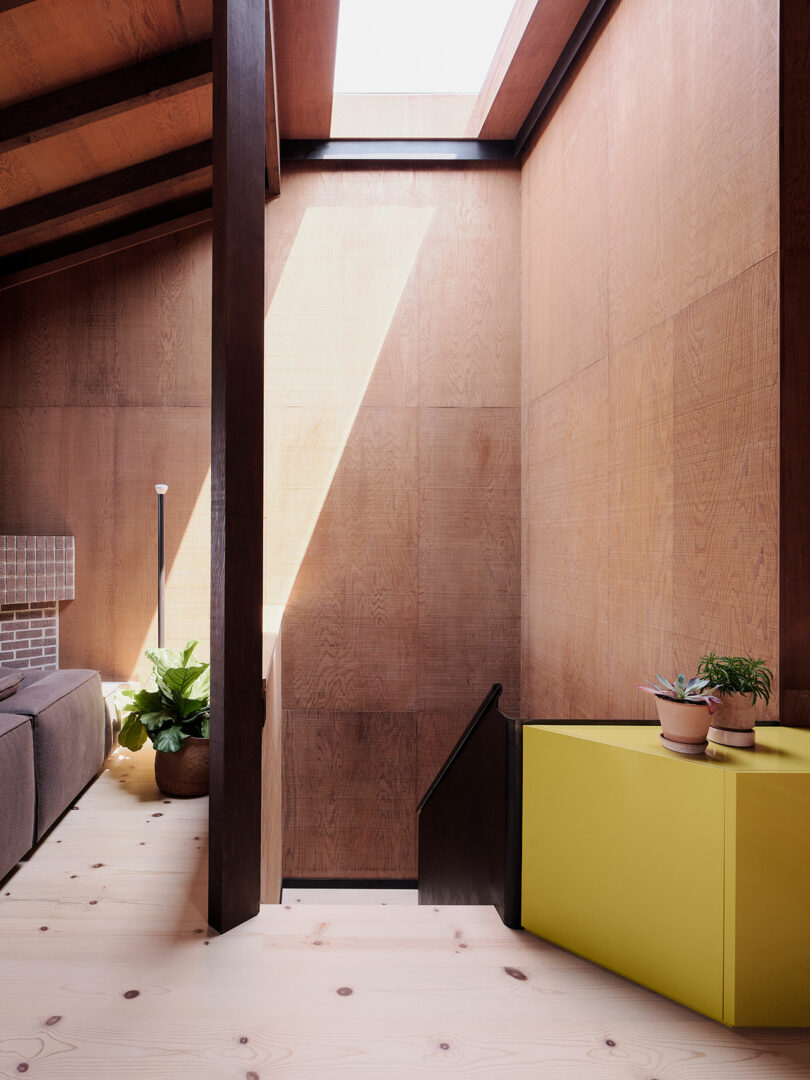
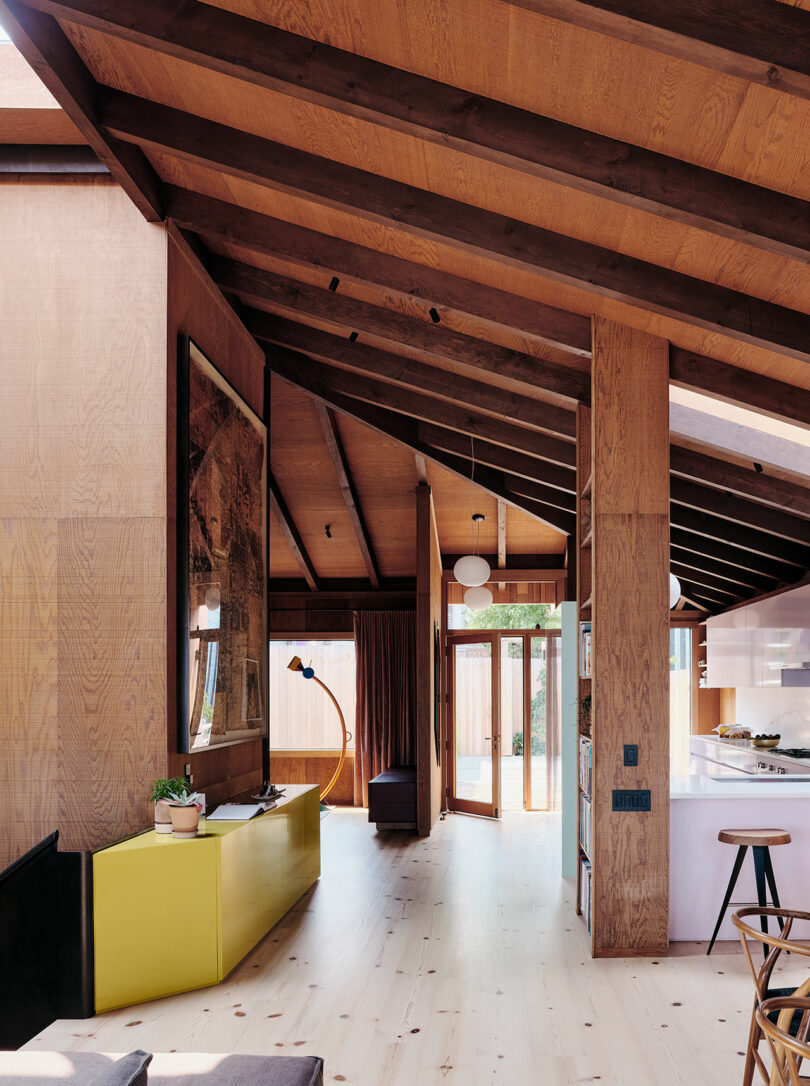
Elsewhere, materials such as terrazzo, poured concrete, and honed gray marble add contrast and depth. These surfaces balance the wood-heavy spaces and introduce moments of surprise through their varied patterns and finishes.
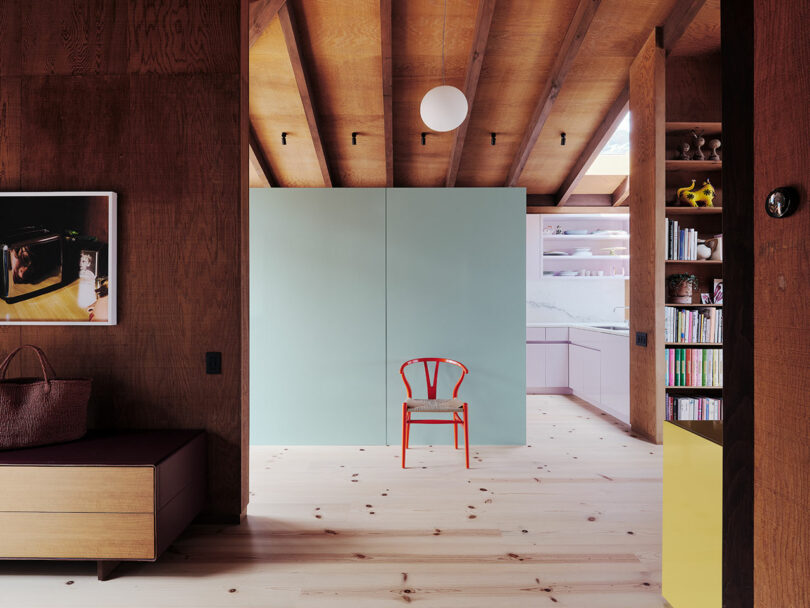
Integral to the renovation was an exploration of color and light. Studio Terpeluk collaborated with designer Beatrice Santiccioli to create a color language that evolves with the architecture. Rather than apply color as a static overlay, they developed a nuanced scheme that responds to shifts in daylight, volume, and function. Bolder hues greet visitors on the upper level gradually fading into softer tones as one descends – mirroring the transition from public to private.
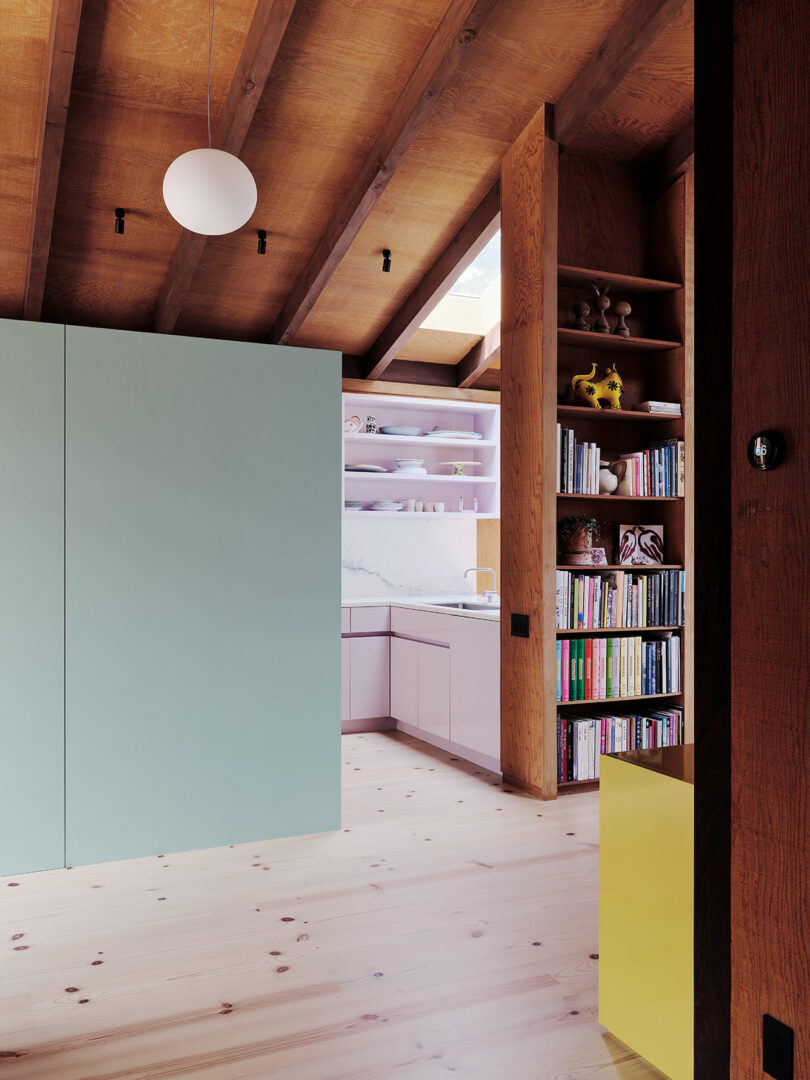
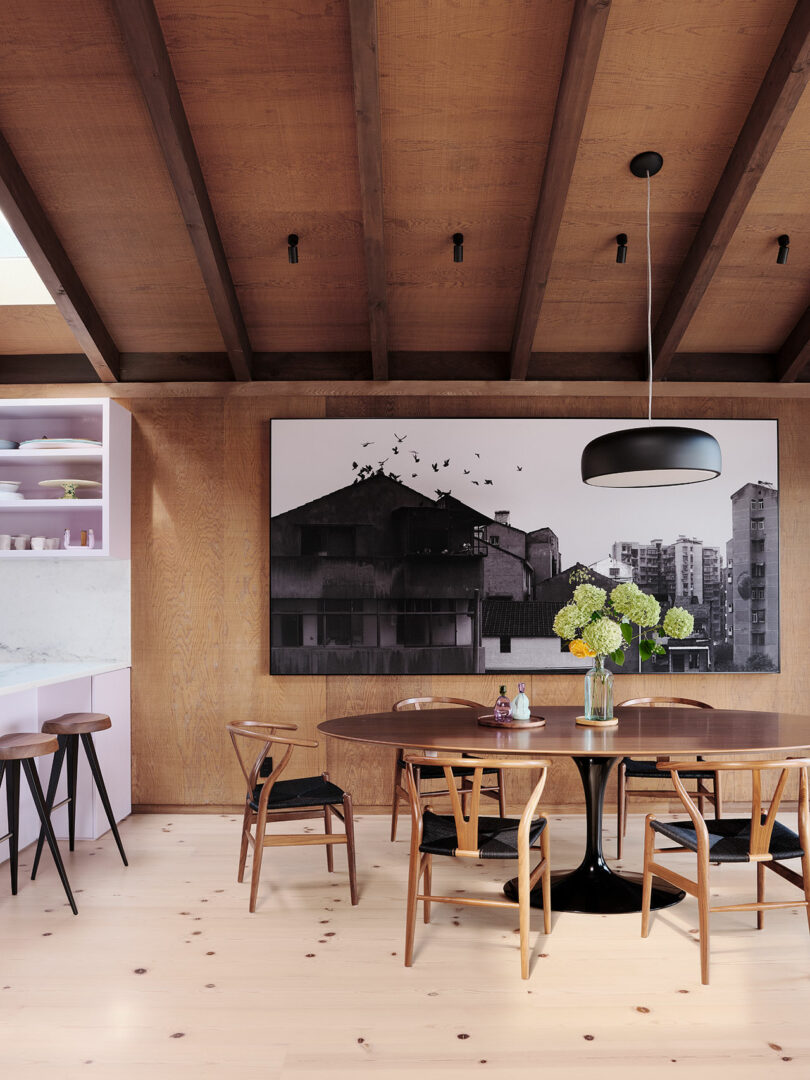
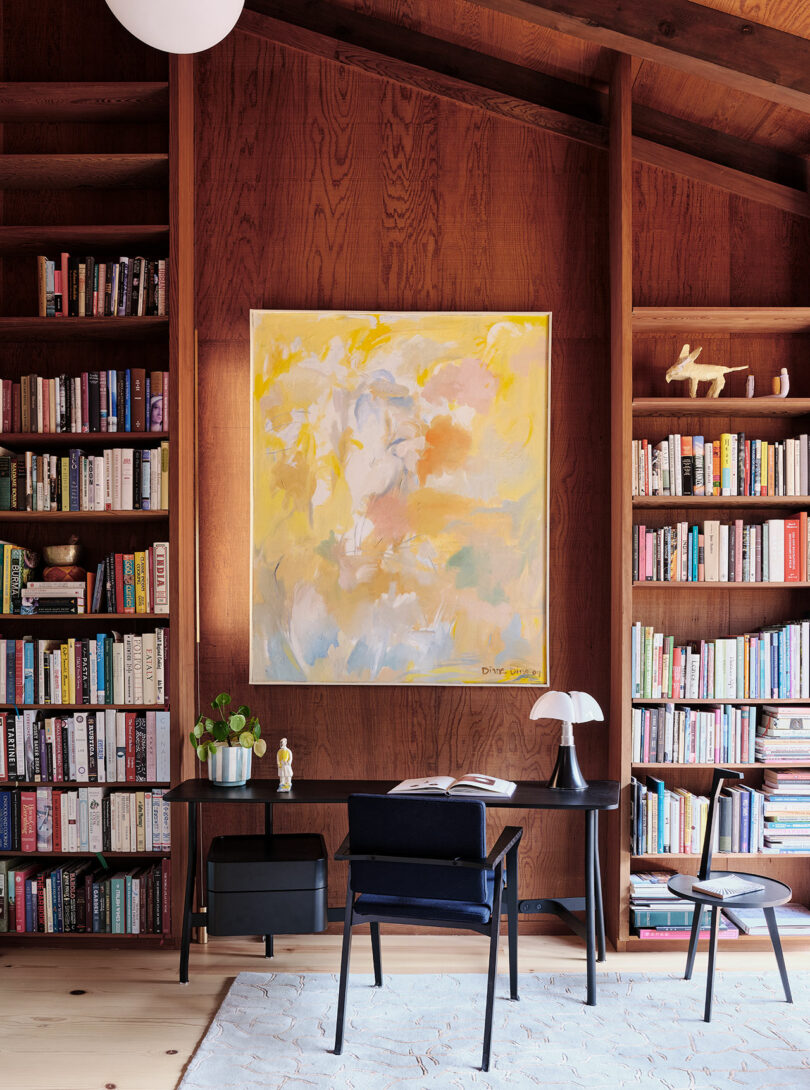
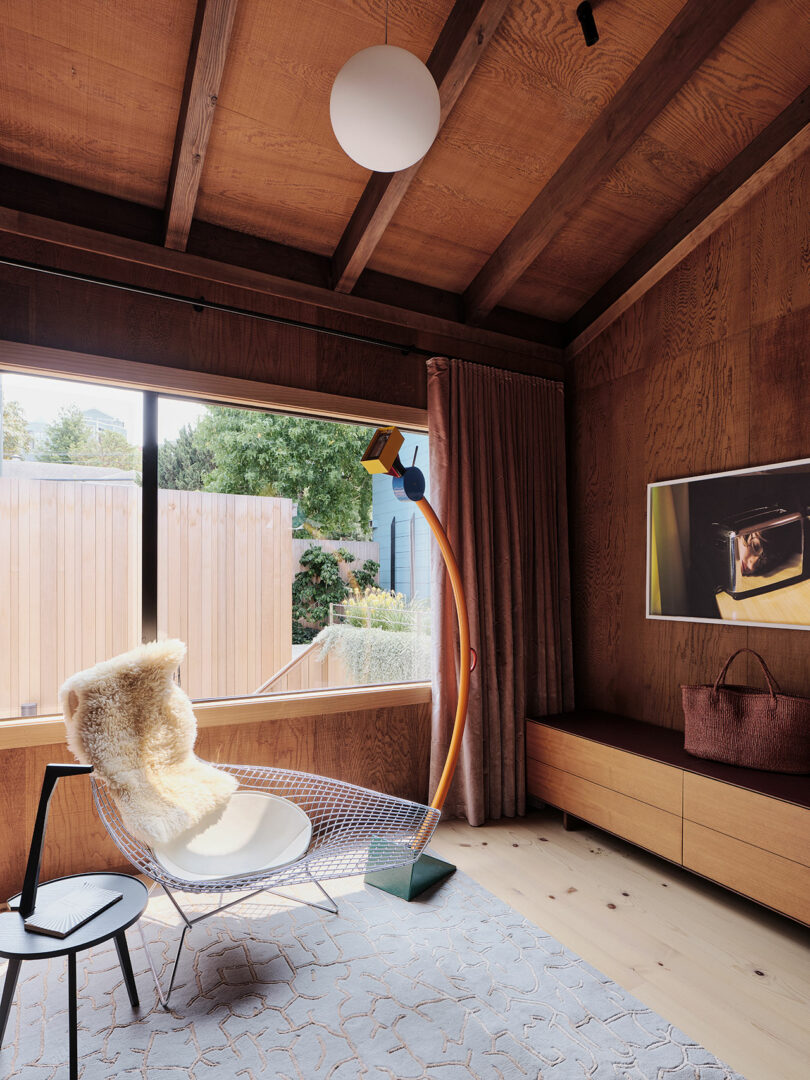
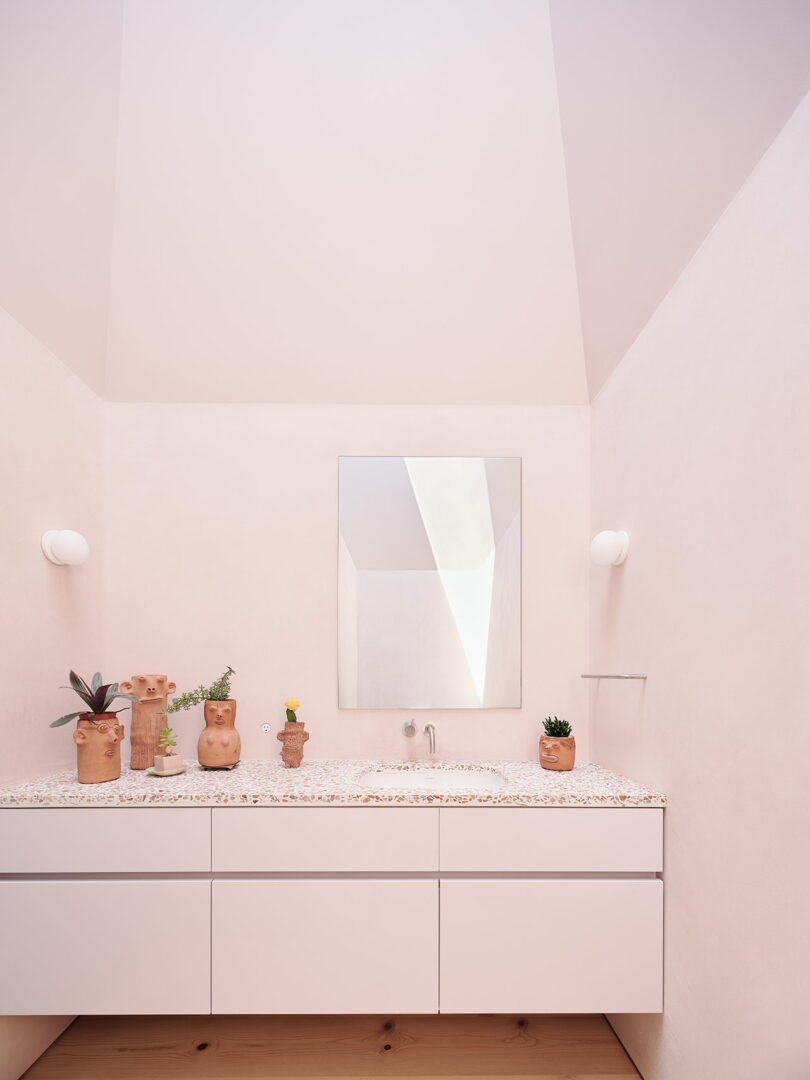
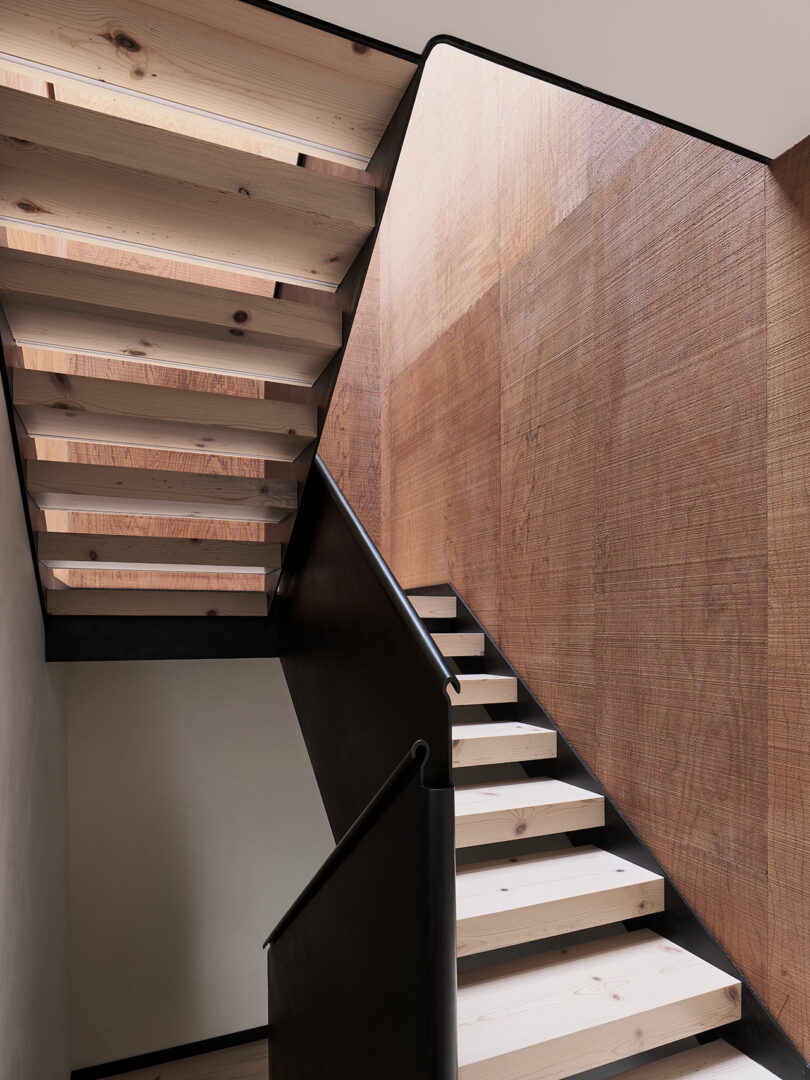
A sculptural staircase crafted in blackened steel connects the two levels and creates a dynamic juxtaposition to the natural woods. It anchors the interior, drawing the eye and reinforcing the home’s verticality.
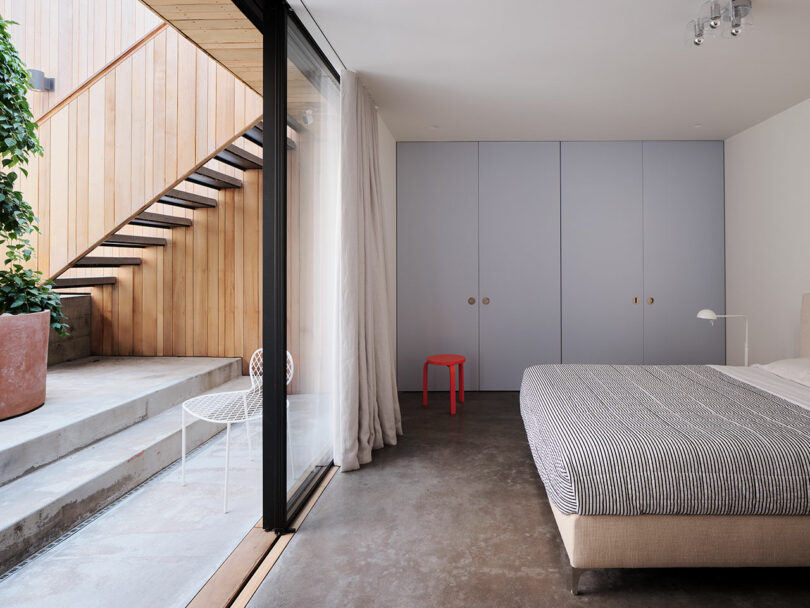
The exterior of Redwood House plays a crucial role in the overall experience, and landscape designer Monica Viarengo was enlisted to reimagine the outdoor spaces with equal thought. Her design begins at the entry courtyard. As visitors move through the property – up into the private courtyard and down toward the terraced back garden – the planting scheme shifts from curated and orderly to wild and expressive.
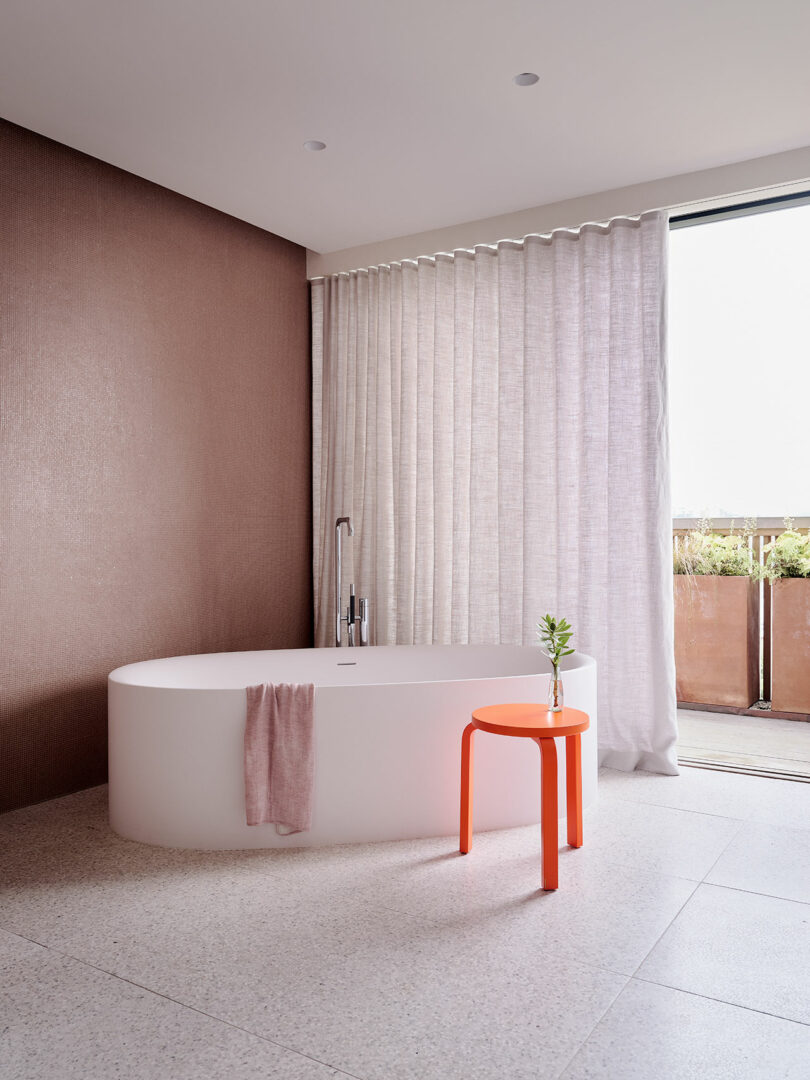
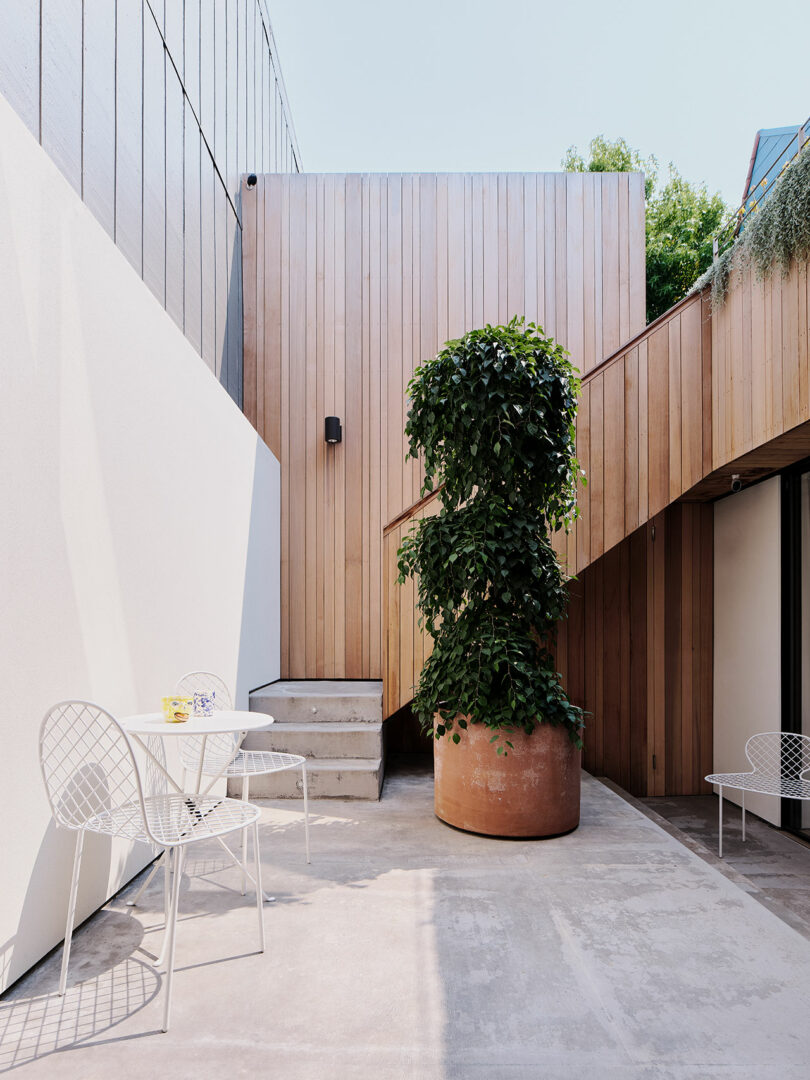
The newly reclad facades, now wrapped in irregular planks of western red cedar, unify the home’s visual identity. The wood’s varied grain and tone work organically with the landscape, allowing the house to age gracefully, much like a natural element in its own habitat.
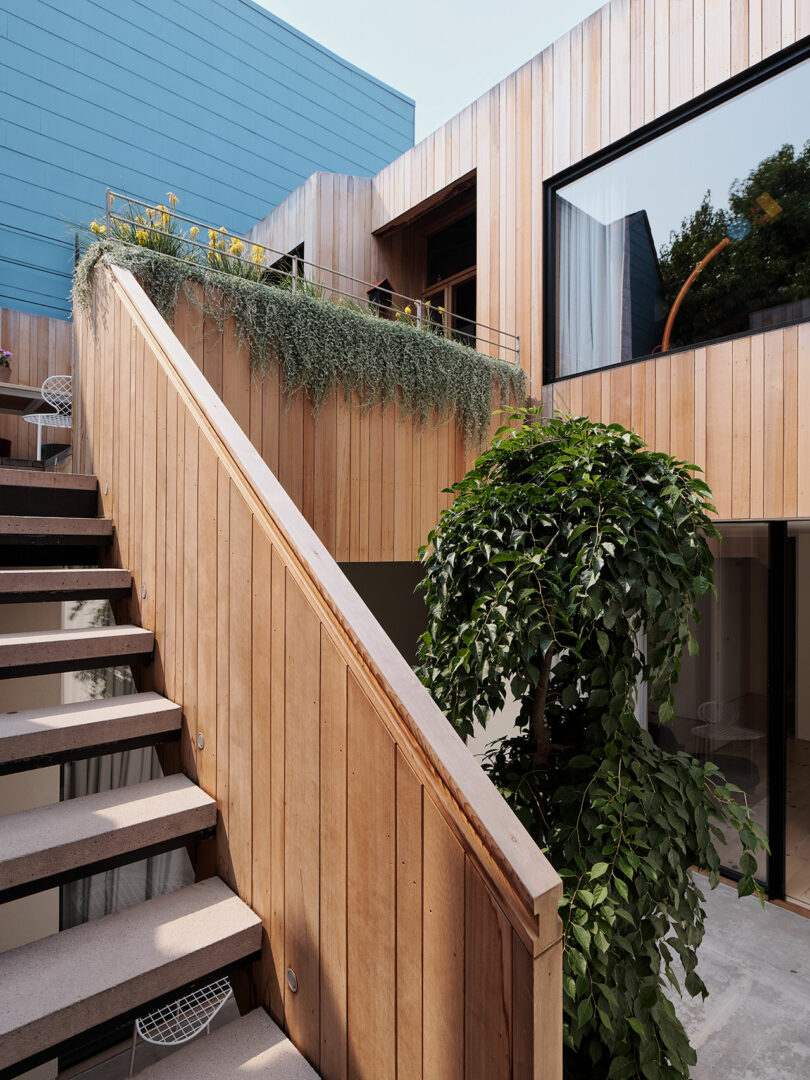
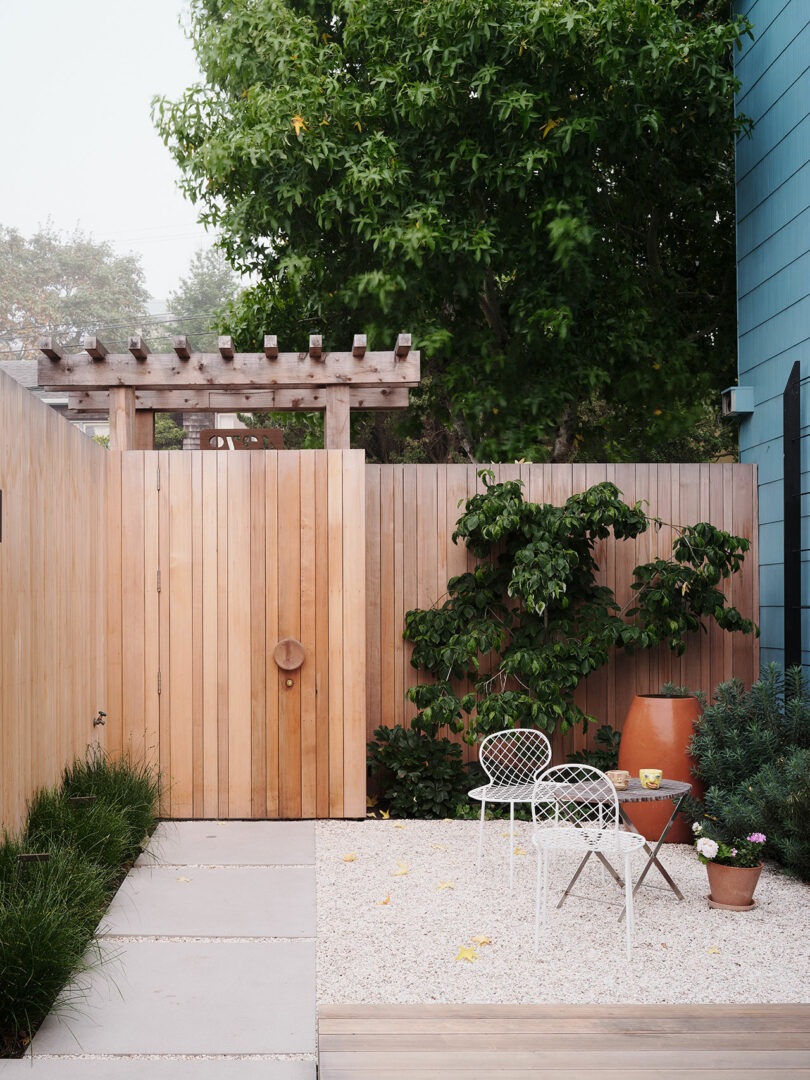
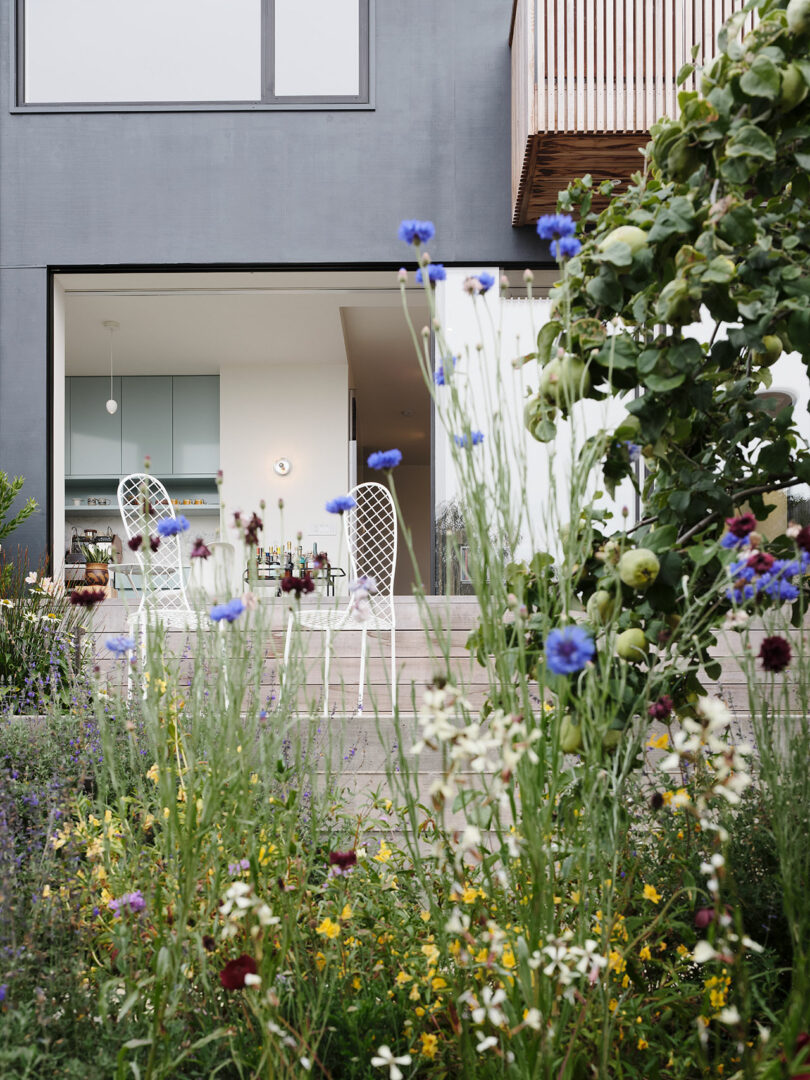
For more information on the Redwood House or Studio Terpeluk, visit studioterpeluk.com.
Photography by Joe Fletcher.

